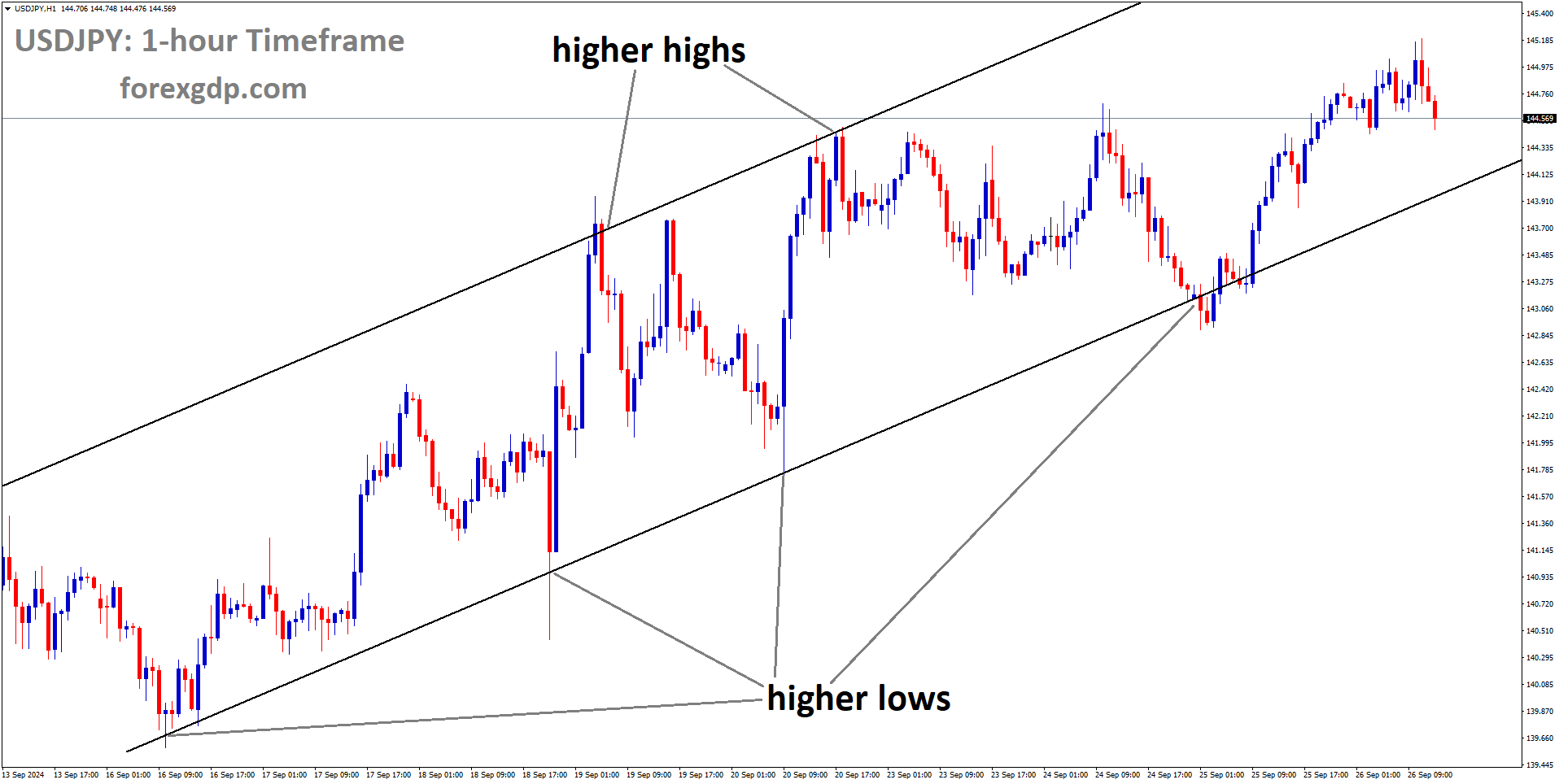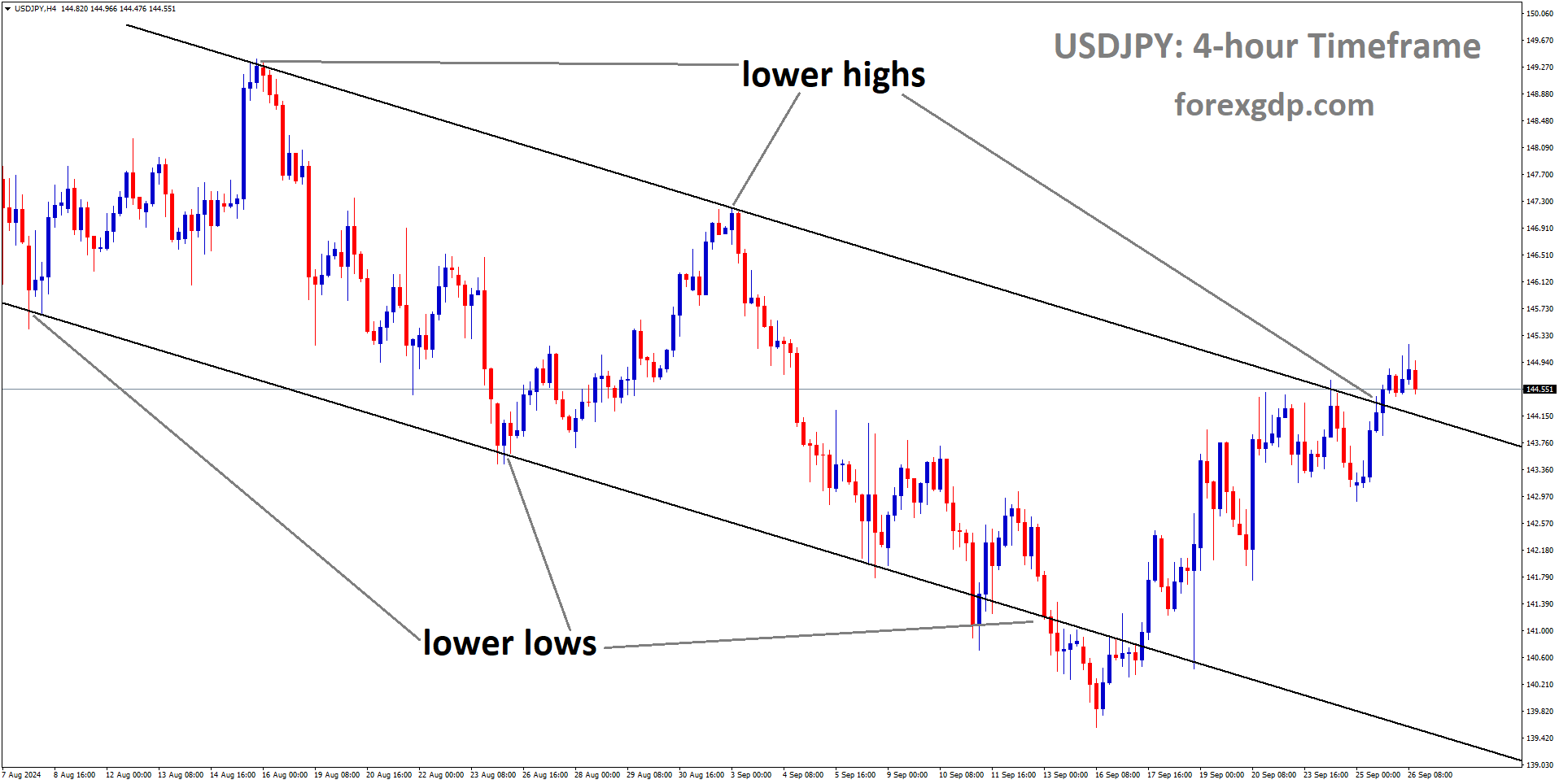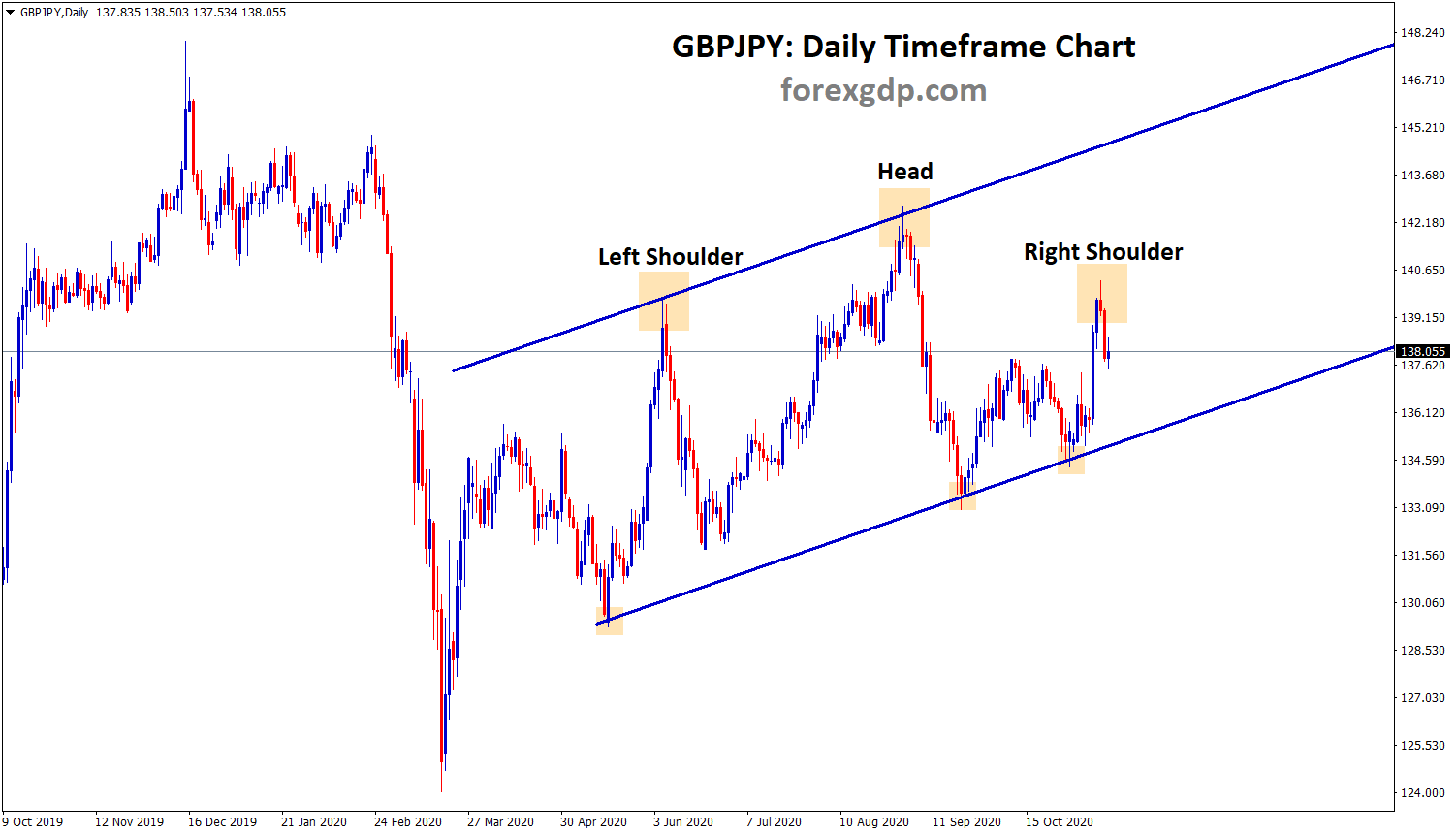USDJPY is moving in a descending channel, and the market has reached the lower high area of the channel
#USDJPY Analysis Video
USD/JPY Edges Lower as Market Eyes Potential Interest Rate Changes
The USD/JPY currency pair has recently seen some volatility, with changes largely driven by ongoing economic data releases and speculation surrounding upcoming interest rate decisions. As we move into Thursday’s early Asian trading session, the pair was hovering around the 144.60 mark, experiencing a slight dip in value. There are several key factors influencing this movement, and it’s crucial to break down what’s going on.
Let’s take a closer look at what’s affecting the USD/JPY exchange rate and what we might expect going forward.
A Weaker US Dollar Due to Fed Expectations
One of the major reasons behind the slight decrease in the USD/JPY pair is the softening of the US Dollar (USD). The USD’s decline can be traced back to growing expectations for a possible interest rate cut by the Federal Reserve (Fed). There is an increasing belief among market participants that the Fed may opt for a large rate reduction in the near future, particularly during their November meeting.
Why Is the Fed Considering a Rate Cut?
The Federal Reserve’s decisions are heavily influenced by economic indicators, and recent data suggest some areas of concern. For instance, earlier this week, a report on US consumer sentiment came in lower than expected, sparking worries about the overall health of the US labor market. If consumer confidence is low, it might indicate that Americans are worried about job security or their personal finances, which could slow down spending and hurt the broader economy.
This sentiment, combined with other economic data, has led to a growing consensus that the Fed could cut interest rates soon. The odds of a 50-basis point cut in November are now sitting at over 57%, with a smaller 25-basis point reduction also on the table.

The Impact of Rate Cuts on the US Dollar
When the Federal Reserve lowers interest rates, it usually makes the US Dollar less attractive to investors. Lower rates mean lower returns on assets denominated in USD, so global investors might start looking elsewhere for higher yields. This decrease in demand for the USD leads to a drop in its value, which can explain why the USD has been losing ground against the Japanese Yen (JPY).
Investors are paying close attention to upcoming speeches by Fed officials, including Fed Chair Jerome Powell. Any hints about future monetary policy changes, especially concerning interest rates, could further influence the value of the USD in the short term.
Japan’s Approach: Cautious Rate Hikes
While the Federal Reserve in the US is contemplating cutting interest rates, the situation is different in Japan. The Bank of Japan (BoJ) recently released the minutes from its July policy meeting, shedding light on their plans for the future. According to the minutes, the BoJ is leaning towards gradually increasing interest rates, but their approach is more cautious and measured.
Why the Caution from the Bank of Japan?
Japan’s economy has faced its share of challenges over the years, including deflation and stagnant growth. As a result, the BoJ has maintained a very loose monetary policy for quite some time, keeping interest rates exceptionally low to encourage spending and investment.
However, the BoJ now recognizes that it may need to start tightening its monetary policy, albeit slowly. Some BoJ members have suggested that raising interest rates to 0.25% might be an appropriate first step, but others are more cautious. They believe that any adjustments to monetary policy should be moderate and carefully timed to avoid disrupting the economy.
How This Affects the Yen
While the BoJ’s cautious approach to raising interest rates might not immediately strengthen the Japanese Yen (JPY), it does indicate a shift in policy. If the BoJ eventually starts to increase rates, it could make the JPY more attractive to investors, which would support its value against other currencies like the USD.

USDJPY is moving in an Ascending channel, and the market has reached the higher low area of the channel
At the same time, Finance Minister Shunichi Suzuki has emphasized that the central bank will continue coordinating closely with the government to ensure that any changes in monetary policy are appropriate for Japan’s economic conditions. This coordination could mean that the BoJ will take a more conservative path in raising rates, which might limit any immediate impact on the USD/JPY pair.
Economic Data and Investor Sentiment: Key Drivers
Both the USD and the JPY are being influenced by economic data from their respective countries. In the US, a recent report from the Commerce Department showed that new home sales fell by 4.7% in August, compared to the previous month. While this decline was slightly better than market expectations, it still points to a cooling housing market.
Meanwhile, investors are also closely watching upcoming data releases, particularly the final Gross Domestic Product (GDP) figure for the second quarter of 2024. If the GDP figure comes in lower than expected, it could further reinforce the case for an interest rate cut by the Fed. On the flip side, stronger-than-expected data might ease concerns about the US economy and support the USD.
In Japan, economic data has been mixed. While some sectors of the economy are showing signs of improvement, others remain sluggish. This mixed picture is one reason why the BoJ is hesitant to move too quickly in raising interest rates. Investors will continue to monitor Japanese economic data for clues about the future direction of monetary policy.
Looking Ahead: What Could Happen Next?
The USD/JPY pair is currently in a bit of a tug-of-war between the policies of the Federal Reserve and the Bank of Japan. On one side, the Fed is considering rate cuts, which would likely weaken the USD. On the other side, the BoJ is slowly moving toward rate hikes, which could eventually support the JPY.
Upcoming Fed and BoJ Decisions
One of the biggest factors that will influence the USD/JPY pair in the coming weeks is the outcome of the Federal Reserve’s November meeting. If the Fed does decide to cut rates, it could push the USD lower, especially if the rate cut is larger than expected. Conversely, if the Fed takes a more cautious approach and opts for a smaller cut (or no cut at all), the USD might hold its ground.

Similarly, the Bank of Japan’s future policy decisions will be closely watched. If the BoJ signals that it’s ready to start raising interest rates, even gradually, it could lend support to the JPY. However, if the BoJ continues to take a wait-and-see approach, the JPY might remain under pressure.
Summary: USD/JPY Moving Forward
In summary, the USD/JPY pair is currently being influenced by diverging monetary policies in the US and Japan. The Federal Reserve is considering cutting interest rates due to concerns about the US economy, while the Bank of Japan is slowly moving toward raising rates, albeit cautiously.
Investors are closely watching economic data and central bank signals for clues about the future direction of the pair. In the near term, the USD could weaken further if the Fed announces a significant rate cut, but the BoJ’s cautious approach might limit the Yen’s ability to capitalize on this weakness. The interplay between these two factors will continue to shape the movement of the USD/JPY pair in the coming weeks.
Don’t trade all the time, trade forex only at the confirmed trade setups
Get more confirmed trade signals at premium or supreme – Click here to get more signals , 2200%, 800% growth in Real Live USD trading account of our users – click here to see , or If you want to get FREE Trial signals, You can Join FREE Signals Now!





